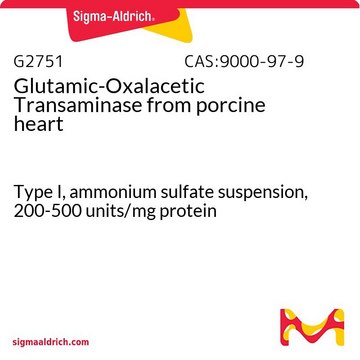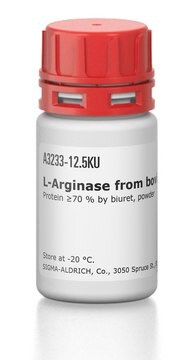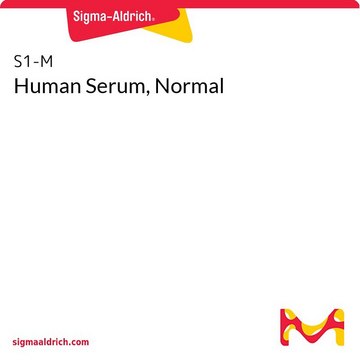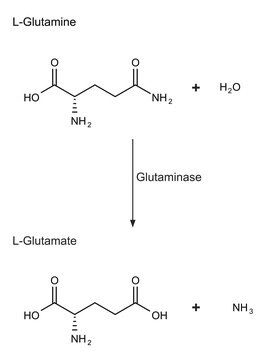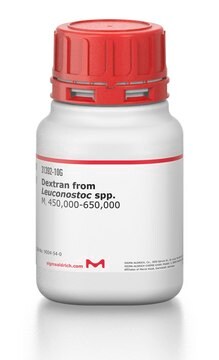A3809
Asparaginase from Escherichia coli
lyophilized powder, 100-300 units/mg protein (biuret)
Synonym(s):
L-Asparagine Amidohydrolase
About This Item
Recommended Products
form
lyophilized powder
Quality Level
specific activity
100-300 units/mg protein (biuret)
composition
Protein, ≥60%
storage temp.
2-8°C
Looking for similar products? Visit Product Comparison Guide
General description
Application
- to compare the cytotoxic effect of L-asparaginase purified from Streptomyces brollosae NEAE-115
- as a standard in asparaginase assay to quantify asparaginase activities in various eel tissues
- to elicit amino acid deprivation
Biochem/physiol Actions
Unit Definition
Physical form
Preparation Note
Analysis Note
Signal Word
Warning
Hazard Statements
Precautionary Statements
Hazard Classifications
Repr. 2 - Skin Sens. 1
Storage Class Code
11 - Combustible Solids
WGK
WGK 3
Flash Point(F)
Not applicable
Flash Point(C)
Not applicable
Personal Protective Equipment
Regulatory Listings
Regulatory Listings are mainly provided for chemical products. Only limited information can be provided here for non-chemical products. No entry means none of the components are listed. It is the user’s obligation to ensure the safe and legal use of the product.
JAN Code
A3809-100UN-PW:
A3809-1KU:
A3809-BULK:
A3809-500UN:
A3809-VAR:
A3809-1KU-PW:
A3809-100UN:
Choose from one of the most recent versions:
Already Own This Product?
Find documentation for the products that you have recently purchased in the Document Library.
Our team of scientists has experience in all areas of research including Life Science, Material Science, Chemical Synthesis, Chromatography, Analytical and many others.
Contact Technical Service
